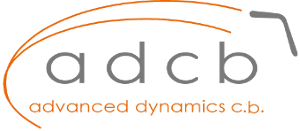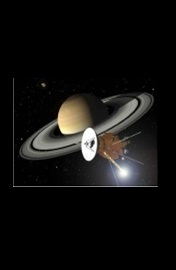Theory of Dynamic Interactions studies the effects produced on a body with intrinsic rotation
NEW APPLICATIONS IN ASTROPHYSICS OF THE THEORY OF DYNAMIC INTERACTIONS
These results are applicable to other dynamic systems such as planetary system, or other areas of physics and technology, possibly enabling new advances in research and innovation in an unprecedented rotational dynamics Interactions
Madrid, June 2015.- The School of Aeronautical Engineering (UPM), has been the scene of the presentation of the thesis: Flight Simulator. Journey to Saturn on a space shuttle, which has incorporated the criteria of the Theory of Dynamic Interactions to calculate more accurately simulated interplanetary trajectories.
The author of the thesis, Almudena Martin Gutierrez, praised the implementation of this theory in their project, after analyzing different texts published by the research group of Spanish private ADVANCED DYNAMICS, which has been developing this theory.
On paper: The dynamic abnormalities Pioneer probes (G. Barceló http://dinamicafundacion.com/wp-content/uploads/2014/02/ANOMAL%C3%8DAS-DIN%C3%81MICAS-EN-LAS-SONDAS-PIONEER1.pdf ), inconsistencies observed in the trajectories of the Pioneer probes were analyzed, proposing that the observed changes could be justified with the Theory of Dynamic interactions.
Almudena Martin estimated possible to increase the accuracy of the interplanetary trajectories simulated using the same methodology, so it considered appropriate to use the same dynamic calculations on the simulator.
Theory of Dynamic Interactions studies the effects produced on a body with intrinsic rotation (as in the case of a spacecraft in interplanetary travel), and complements the principles of classical mechanics.
In its report, the author also refers to another text by the same author: A new rotational dynamics of interactions for the planet Saturn (http://dinamicafundacion.com/wp-content/uploads/2014/02/UNA-NUEVA-DINAMICA-ROTACIONAL-DE-INTERACCIONES-PARA-EL-PLANETA-SATURNO.pdf ) to evaluate the effect of Saturn’s rings on the probe, and even to determine the behavior of the rings of Saturn itself.
After application of these innovative approaches of the Theory of Dynamic Interactions in its calculations, the author of the thesis proposes that “The application of these dynamics to astrophysics assumptions and, in particular, the dynamics of Saturn and its rings, could promote new advances in the discovery of his puzzling behavior. For example, it can justify that the heavenly bodies orbit and rotate simultaneously, or simultaneously all are in the same plane as the rings of Saturn, when subjected to a constant torque. These results could then be applied to other dynamic systems such as planetary system, or other areas of physics and technology, possibly allowing suggestive new advances in research and innovation in an unprecedented Rotational Dynamic Interactions “.
This new physical-mathematical interpreting celestial mechanics model, as was proposed by Dr. Barceló in the article: Proposal of new criteria for celestial mechanics (http://dx.doi.org/10.4236/ijaa.2013.34044), published in the International Journal of Astronomy & Astrophysics, volume, 3-4 December 2013. In this paper was summarized the treaty published by the same author in two volumes: IMAGO UNIVERSI. A history of the human conception of the cosmos. (Ed. Arpegio. Barcelona, 2013),
Imago Universi described, in a fascinating way, human desire and the passion for knowledge of the universe. In the last chapter of this treaty the implementation of the Theory of Dynamic Interactions astrophysics and specifically to the dynamics of stellar systems and galaxies it is proposed. The treaty has its own website: http://imagouniversi.com/, and a video presentation that can be viewed at http://vimeo.com/62247544.
More information:
Roatan Comunicación – Patricia Cavanillas – 91 563 67 80 – pcavanillas@roatan.es
http://www.advanceddynamics.net/
http://www.dinamicafundacion.com/
☏ (+34) 914 112 823 (+34) 915 614 107
@ comunicacion@advanceddynamics.net
✉ C. Pedro de Valdivia 31
28006 Madrid (España)

